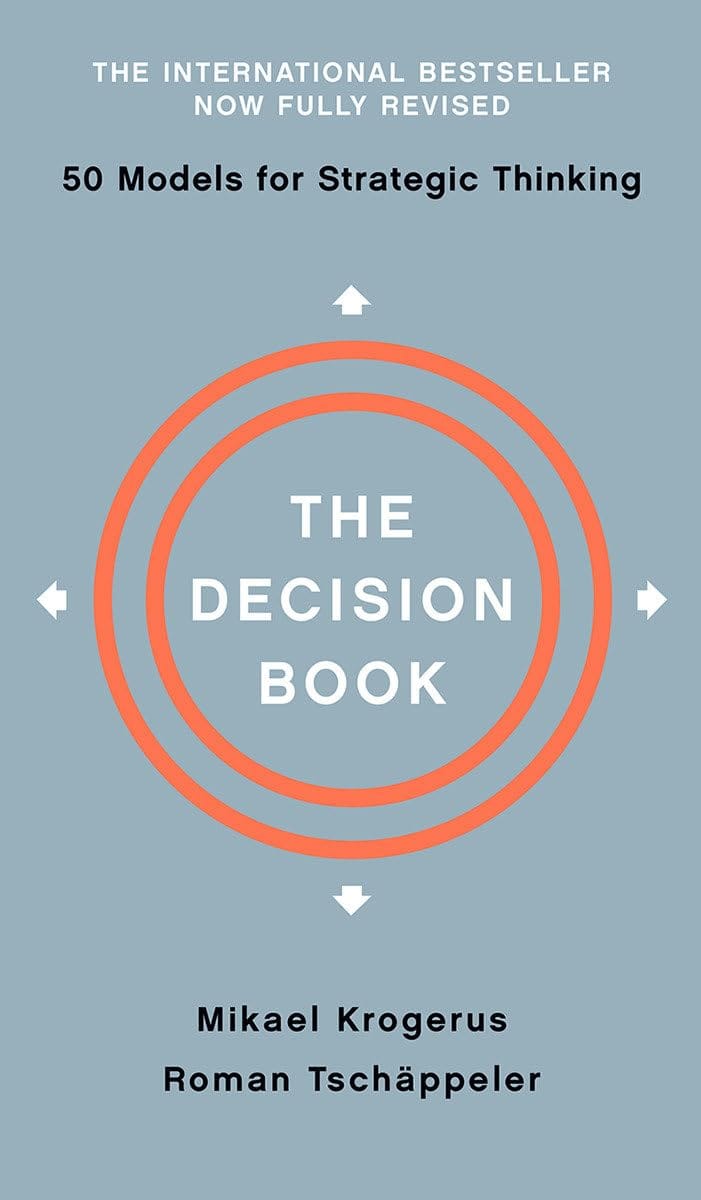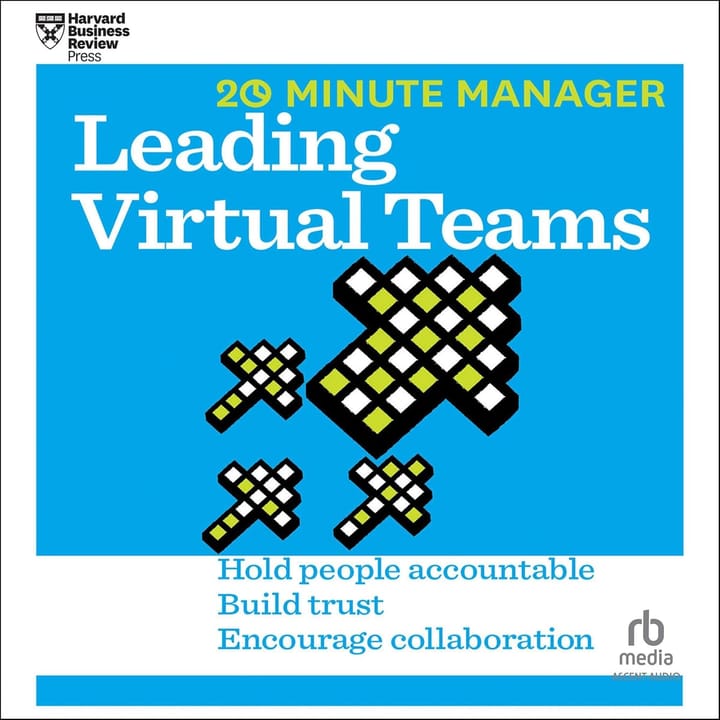Book Summary: The Decision Book
Learn how to make better decisions with The Decision Book by Krogerus and Tschäppeler. This summary breaks down key concepts for improving your choices.

Essential Insights
- The Decision Book provides a comprehensive guide to making better decisions in both personal and professional life.
- Readers can learn about various decision-making models and techniques, including the pros and cons of each approach.
- The book emphasizes the importance of considering different perspectives, setting priorities, and taking risks when making decisions.
Introduction to The Decision Book
The Decision Book, written by Mikael Krogerus and Roman Tschäppeler, is a powerful tool that offers readers practical insights into making better decisions in both personal and professional contexts. This book presents a collection of models that can aid in understanding complex decision-making processes and provide clarity in navigating various challenges that individuals encounter in their lives.
For individuals seeking to enhance their leadership skills and personal development, The Decision Book serves as a valuable resource. By delving into the different decision-making models presented in the book, readers can gain a deeper understanding of their own cognitive processes and learn how to approach choices with more intentionality and strategic thinking. The practical advice and frameworks provided in this book can empower readers to make more informed decisions, ultimately leading to improved outcomes and personal growth.
Buy "The Decision Book" on Amazon
Summary of The Decision Book
The Decision Book presents a clear approach to making choices in both personal and professional life. It emphasizes the importance of understanding various decision-making processes and offers practical tools that can be applied across different situations. By simplifying complex scenarios, the authors encourage readers to engage in reflective thinking, enhancing their ability to navigate life's challenges with clarity and confidence. This focus on decision-making skills is particularly valuable for leaders who must frequently choose a path forward amid uncertainty.
One of the book's standout features is its use of visual aids to present decision-making models. These diagrams help distill information into easily digestible formats, making concepts accessible to a wider audience. Additionally, the authors draw from a variety of disciplines, including psychology and management, to present a well-rounded approach to choices. This interdisciplinary angle not only broadens the reader's understanding but also encourages creative problem-solving processes. Such contributions elevate the book as a practical guide that can be referenced repeatedly in different circumstances. As we explore the concepts in The Decision Book, readers will discover that decision-making is not merely an episodic task but a skill that can be cultivated over time. The techniques highlighted in the book serve as a foundation for developing better judgment and confidence when facing choices.
With key principles and actionable advice, the book lays the groundwork for individuals aspiring to enhance their leadership capabilities and foster growth in their personal and professional lives. Embracing these insights can lead to more informed decisions and inspire others to do the same.
Key Lessons From The Decision Book
Understanding Decision-Making Models
The Decision Book presents various models that simplify how individuals can approach decisions. These models serve as valuable tools that can streamline the decision-making process, making it less overwhelming. For example, the book discusses the Eisenhower Matrix, which categorizes tasks based on urgency and importance. This visual provides clarity for prioritizing actions instead of becoming bogged down by an endless to-do list.
Selecting appropriate decision-making models can significantly affect the outcomes of choices. By applying models like the Eisenhower Matrix, readers can learn to distinguish between what truly requires their attention and what can wait or be delegated. This not only enhances efficiency but also promotes better focus on goals.
The Role of Biases in Decision-Making
Embracing Uncertainty in Choices
The Decision Book also addresses the inherent uncertainty in decision-making. The authors propose that accepting this uncertainty can lead to better decision outcomes. For instance, the concept of "minimax regret" encourages individuals to consider the potential regret of not taking an action rather than simply weighing potential losses. This approach allows individuals to navigate ambiguity rather than avoid it.
The Importance of Reflective Practices
Application Ideas for The Decision Book
Understanding the Decision Matrix
One of the key concepts from the book is the Decision Matrix, which helps individuals weigh various factors when faced with a choice. To implement this tool in your daily life, start by identifying a specific decision you need to make. Create a grid with options on one side and criteria for evaluation across the top. Rate each option based on how well it meets each criterion, allowing for a numerical score to be derived for each choice.
This approach can be particularly effective for leaders tasked with making strategic decisions. When evaluating potential projects or initiatives, using the Decision Matrix enables clearer visibility on which options align best with organizational goals. Furthermore, consider adapting this tool for team discussions. Engaging team members in filling out the matrix fosters collaboration and brings diverse input into the decision-making process.
To make this exercise smoother, set a timeframe for completing the matrix. This timeframe encourages focused discussion and decision-making without getting bogged down in endless analysis. For added effectiveness, regularly review and update the criteria based on recent experiences or shifting priorities. Suppose a team is deciding between two product launches; implementing this matrix not only clarifies the decision but also enhances collective ownership of the chosen path.
Utilizing the 10/10/10 Rule
The 10/10/10 Rule is another powerful tool from the book that assists individuals in considering the long-term effects of their choices. To apply this concept, ask yourself how a decision will impact you in ten minutes, ten months, and ten years. This method prompts reflection beyond immediate gratification and encourages a longer-term view.
Leaders can leverage the 10/10/10 Rule when faced with decisions that involve team dynamics or corporate culture changes. For instance, when deciding to implement a strict remote work policy, considering how it affects team morale shortly, employee retention a year later, and overall productivity over a decade can help formulate a more balanced approach. To get the most out of this tool, document your thoughts and revisit them as conditions change or as you gather more data.
To simplify this process, create a quick checklist format where you jot down your immediate thoughts and then elaborate on them for each time frame. This method not only streamlines decision-making but also provides a tangible reference point for future evaluations. In a real scenario, using the 10/10/10 Rule helped a manager decide against a hasty restructuring measure, instead opting for gradual adjustments, ultimately fostering a more cohesive environment.
Incorporating the Eisenhower Matrix
The Eisenhower Matrix offers a practical way to prioritize tasks, distinguishing between what is urgent and what is important. To implement this tool, list all tasks on a board and categorize them into four quadrants: urgent and important, important but not urgent, urgent but not important, and neither urgent nor important. This visual representation helps clarify where to focus your efforts and resources.
This method can significantly benefit leaders by aiding in time management and task allocation. For example, a project manager facing tight deadlines can quickly identify which tasks require immediate attention and which can be scheduled for later. This clarity allows for better delegation and can improve team productivity. To enhance group involvement, consider revisiting the matrix during team meetings, allowing for a collective assessment of priorities.
To ease the process of using this matrix, start your day by reviewing and updating it to reflect any changes or newly emergent tasks. Additionally, encourage team members to maintain their personal matrices to align individual priorities with team goals. A real-world instance of this approach can be found in a startup, where the co-founders utilized the Eisenhower Matrix weekly to ensure that their focus remained on critical growth initiatives rather than getting overwhelmed by day-to-day operations.
Embracing the Art of Letting Go
Another essential lesson from the book relates to the importance of knowing when to let go of decisions or commitments that are no longer beneficial. To apply this concept, regularly assess ongoing projects or tasks, asking yourself for each: What is the cost of continuing versus stopping? This evaluation encourages you to recognize when the optimal choice is to move on, freeing up resources for more promising endeavors.
This approach can lead to significant efficiencies for leaders, particularly within larger teams where resources may be stretched thin. For example, a division head might find that a struggling marketing campaign is taking up too much time and money without yielding results. By recognizing the need to pivot, they can redirect that effort toward a more viable initiative. Often, having a set schedule for these assessments, such as monthly, helps make this process routine and actionable.
To facilitate letting go, cultivate a culture where it's acceptable to reassess and shift directions, ensuring team members feel supported in doing so. Encourage open communication, so that insights can be shared freely. For instance, a company that regularly evaluates project status has teams that are more agile and innovative, evidenced by their ability to pivot away from failing projects towards successful new ventures based on market feedback. By letting go at the right time, they maintain momentum and continued growth.
Concluding Thoughts
The Decision Book by Mikael Krogerus and Roman Tschäppeler offers a practical guide for enhancing decision-making skills in both personal and professional settings. The authors emphasize the significance of understanding decision-making models and cognitive biases, equipping readers with useful tools to navigate complex choices with confidence. By breaking down complicated scenarios and promoting reflective thinking, the book serves as an essential resource for anyone seeking to improve their ability to make informed decisions. Key concepts discussed in the article include various decision-making tools, such as the Decision Matrix and the Eisenhower Matrix, which help prioritize tasks effectively.
The 10/10/10 Rule encourages individuals to consider long-term impacts, fostering a forward-thinking approach. Additionally, the book highlights the importance of recognizing cognitive biases that can distort judgment and the necessity of embracing uncertainty as a natural part of decision-making. Through reflective practices, readers can cultivate self-awareness and continuously refine their decision-making process.
The Decision Book stands out not only for its practical advice but also for the interdisciplinary approach that draws from psychology and management. By incorporating visual aids and structured models, the authors make complex ideas readily understandable and applicable. This aspect reinforces the book's utility as a reference that readers can return to as they encounter new challenges or decisions in their lives. Encouraging individuals to adopt the lessons from this book can lead to more confident, effective decision-making.
By actively applying these concepts and engaging in reflective practices, readers can foster personal growth and improve their leadership capabilities. Take the time to explore The Decision Book further, and arm yourself with the tools you need to make better choices. Embrace the opportunity to refine your decision-making skills and inspire others through your actions. The journey starts with recognizing the value of informed decisions and committing to a continuous process of learning and improvement.
Related Topics
- Decision-making process Understanding the steps involved in making a decision and how to improve the process.
- Cognitive biases Exploring common biases that can influence decision-making and how to mitigate their impact.
- Goal setting Strategies for setting and achieving goals to help guide decision-making.
- Time management Techniques for effectively managing time to make better decisions and prioritize tasks.
Reflection & Discussion Questions
Reflection is a powerful tool for personal growth and leadership development. Whether you're exploring your own experiences or engaging in thoughtful group discussion or team training, reflection questions help uncover new insights, clarify values, and inspire meaningful action. Below are questions designed to deepen your understanding of the concepts taught in The Decision Book, and facilitate constructive conversations with your team or group.
- How can you utilize the Decision Matrix to prioritize tasks in your daily life or work environment?
- What biases do you recognize in your decision-making process, and how can you address them effectively?
- How can you incorporate the 10/10/10 Rule to assess the long-term impacts of your choices in both personal and professional settings?
- What are some examples of decisions or commitments that you may need to let go of in order to free up resources for more beneficial endeavors?
- How can you apply reflective practices to improve your decision-making skills over time?
- How can you encourage a culture of continuous improvement and learning within your team or organization based on the insights from the book?
- What decision-making models resonate with you the most, and how can you apply them to different situations in your life?
- How can you navigate uncertainty more effectively in your decision-making process based on the book's recommendations?
- In what ways can you leverage the visual aids and diagrams presented in the book to enhance your understanding and application of decision-making models?
- How can you adapt the concepts from the book, such as the Eisenhower Matrix, for team discussions and collaborative decision-making processes?
- What strategies can you implement to integrate the key principles and actionable advice from the book into your personal and professional growth journey?
Recommended Reading
Below are a few recommended books related to concepts taught in The Decision Book.
- The Personal MBA: Master the Art of Business by Josh Kaufman. This book offers a comprehensive guide to key business concepts and strategies for success.
- Blink: The Power of Thinking Without Thinking by Malcolm Gladwell. This book explores the power of intuition and snap judgments in decision-making.
- Thinking, Fast and Slow by Daniel Kahneman. This book delves into the two systems that drive the way we think and make decisions.
Frequently Asked Questions
What is the purpose of "The Decision Book"?
The purpose of "The Decision Book" is to provide readers with a comprehensive guide to decision-making, offering various tools, models, and techniques that can be used to improve the quality of the decisions we make in both our personal and professional lives. By presenting a wide range of decision-making strategies in a concise and accessible format, this book aims to help readers become more effective and efficient decision-makers.
How can I make more effective decisions?
To make more effective decisions, it is important to understand your own decision-making style and biases. By recognizing if you are more of an intuitive decision maker, a rational decision maker, or if you tend to procrastinate, you can work on improving your decision-making process. Additionally, considering the consequences of different options and seeking out diverse perspectives can help you make more informed choices. Taking the time to reflect on past decisions and learn from any mistakes can also lead to better decision-making in the future.
How can I improve my decision-making skills?
To improve your decision-making skills, you can try various techniques such as making a pros and cons list, seeking advice from others, setting clear goals, considering alternatives, and analyzing potential risks and consequences. It's also important to learn from your past decisions and continuously work on honing your critical thinking and problem-solving abilities. Incorporating mindfulness practices and being aware of your biases can also help you make more informed and rational decisions.
How can I prioritize my to-do list?
To prioritize your to-do list, one effective method is the Eisenhower Matrix. This matrix divides tasks into four categories: urgent and important, important but not urgent, urgent but not important, and neither urgent nor important. By categorizing tasks in this way, you can focus on what truly matters and ensure that you are working on the most important tasks first. This framework helps you to avoid getting caught up in unimportant tasks and prioritize your time effectively.
Buy "The Decision Book" on Amazon
Affiliate Disclaimer
Some of the links on this website may be affiliate links. This means that, at no additional cost to you, we may earn a commission if you click through and make a purchase. Your support through these affiliate links helps sustain and improve the quality of the content we provide.

